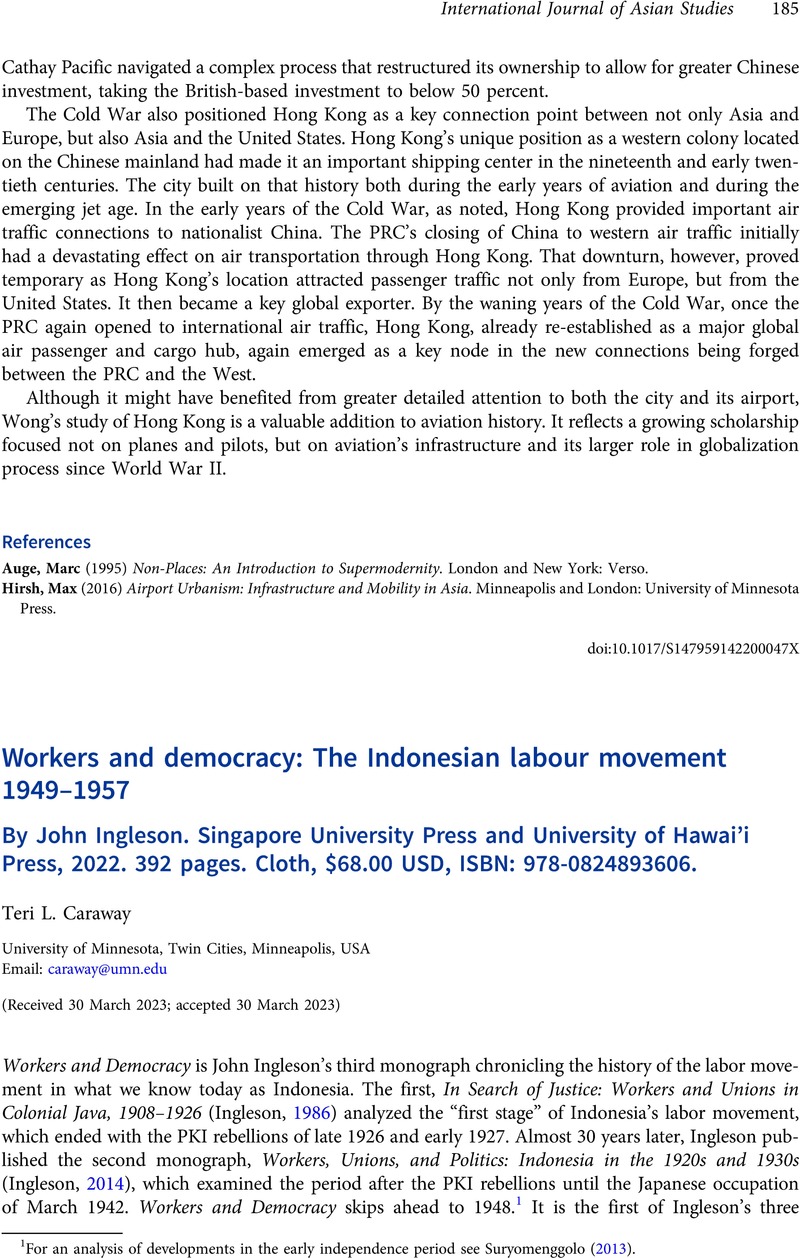No CrossRef data available.
Article contents
Workers and democracy: The Indonesian labour movement 1949–1957 By John Ingleson. Singapore University Press and University of Hawai'i Press, 2022. 392 pages. Cloth, $68.00 USD, ISBN: 978-0824893606.
Review products
Workers and democracy: The Indonesian labour movement 1949–1957 By John Ingleson. Singapore University Press and University of Hawai'i Press, 2022. 392 pages. Cloth, $68.00 USD, ISBN: 978-0824893606.
Published online by Cambridge University Press: 23 May 2023
Abstract
An abstract is not available for this content so a preview has been provided. Please use the Get access link above for information on how to access this content.

- Type
- Book Review
- Information
- Copyright
- Copyright © The Author(s), 2023. Published by Cambridge University Press
References
Ford, Michele (2010) “A Victor's History: A Comparative Analysis of the Labor Historiography of Indonesia's New Order.” Labor History 51:4, pp. 523–41. https://doi.org/10.1080/0023656X.2010.528991.Google Scholar
Ingleson, John (1986) In Search of Justice: Workers and Unions in Colonial Java, 1908–1926. Cambridge: CUP.Google Scholar
Ingleson, John (2014) Workers, Unions, and Politics: Indonesia in the 1920s and 1930s. Leiden: Brill.Google Scholar
Suryomenggolo, Jafar (2013) Organising Under the Revolution: Unions & the State in Java, 1945–48. Singapore: NUS Press.Google Scholar



